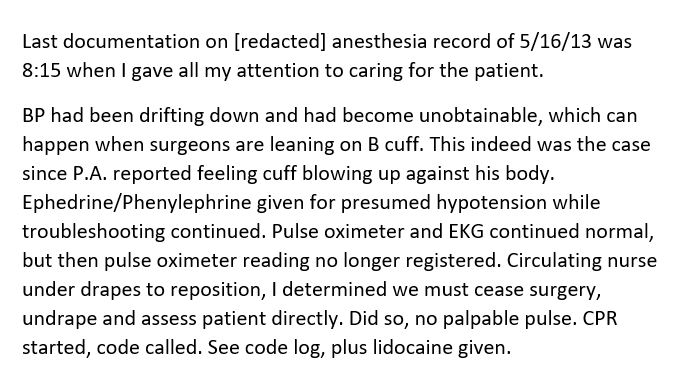The documentation review for this case is atypical. In the previous 12 cases, the Documentation Rubric has been used to grade the doctor’s note. However, the Rubric applies primarily to undifferentiated patients presenting to a clinic, urgent care or ED. It would be difficult to apply the Rubric to this case, so instead we will review some general comments.
The focus of the documentation will be on the anesthesiologist’s note about the incident. The note was written immediately after the patient was transferred to the ED. This was prior to her realization that the patient died of a lidocaine overdose.

The note is a step-by-step description of her actions from the time she noticed something was wrong until he went into cardiac arrest. A simple description of what a physician does is a good first step, but a description of their thought process is what differentiates a mediocre note from an excellent note.
This note contains no description of the anesthesiologist’s thought process. The thought process during a cardiac arrest should focus on thinking about a list of potential causes and what can be done to reverse them. In one of the depositions she had mentioned a heart attack or pulmonary embolism. Documenting this would have changed neither the medical nor legal outcome, but it would have made her note look more thoughtful. Good documentation and good medical care go hand-in-hand. Getting in the habit of writing good notes helps organize thoughts and encourages thoughtful approaches to treating patients.
The single take-home point about documentation for this case: Write down what you were thinking.
If you want to see more cases, there are numerous cases on the home page. Subscribe to the email list to get first access to new cases and bonus content!